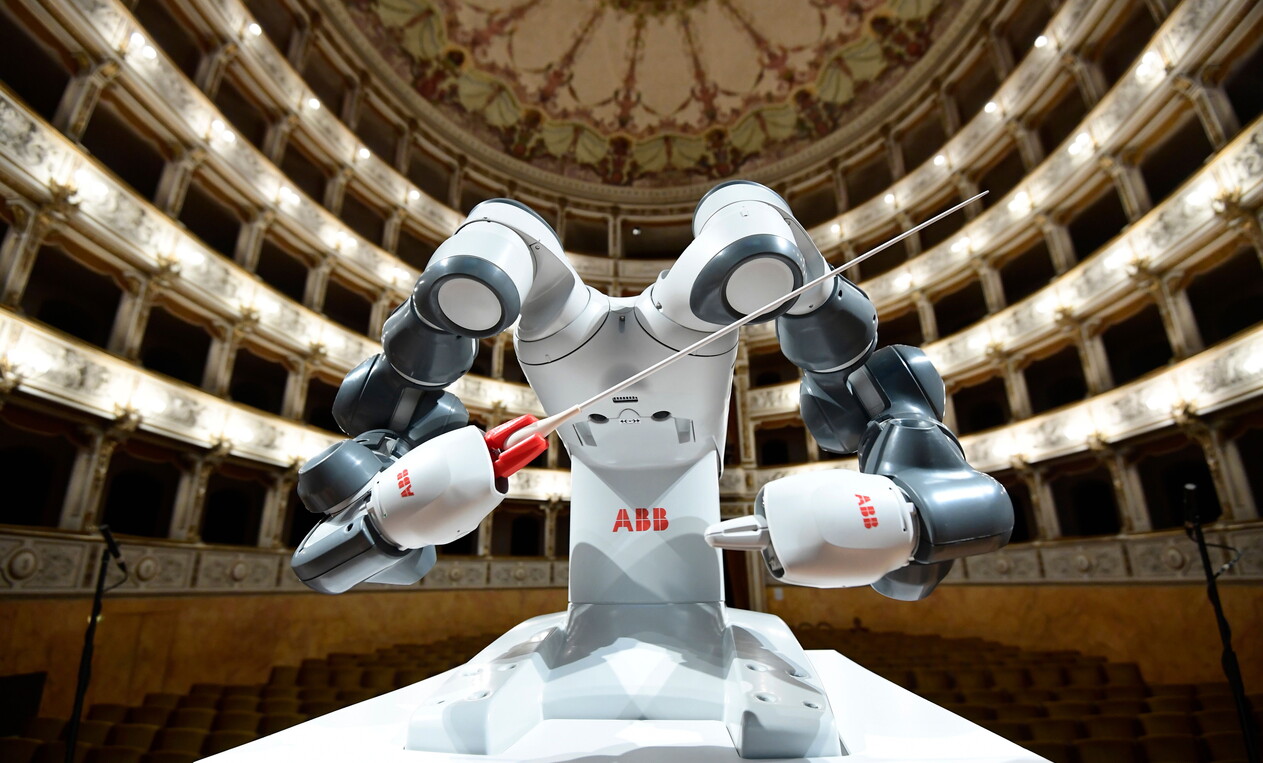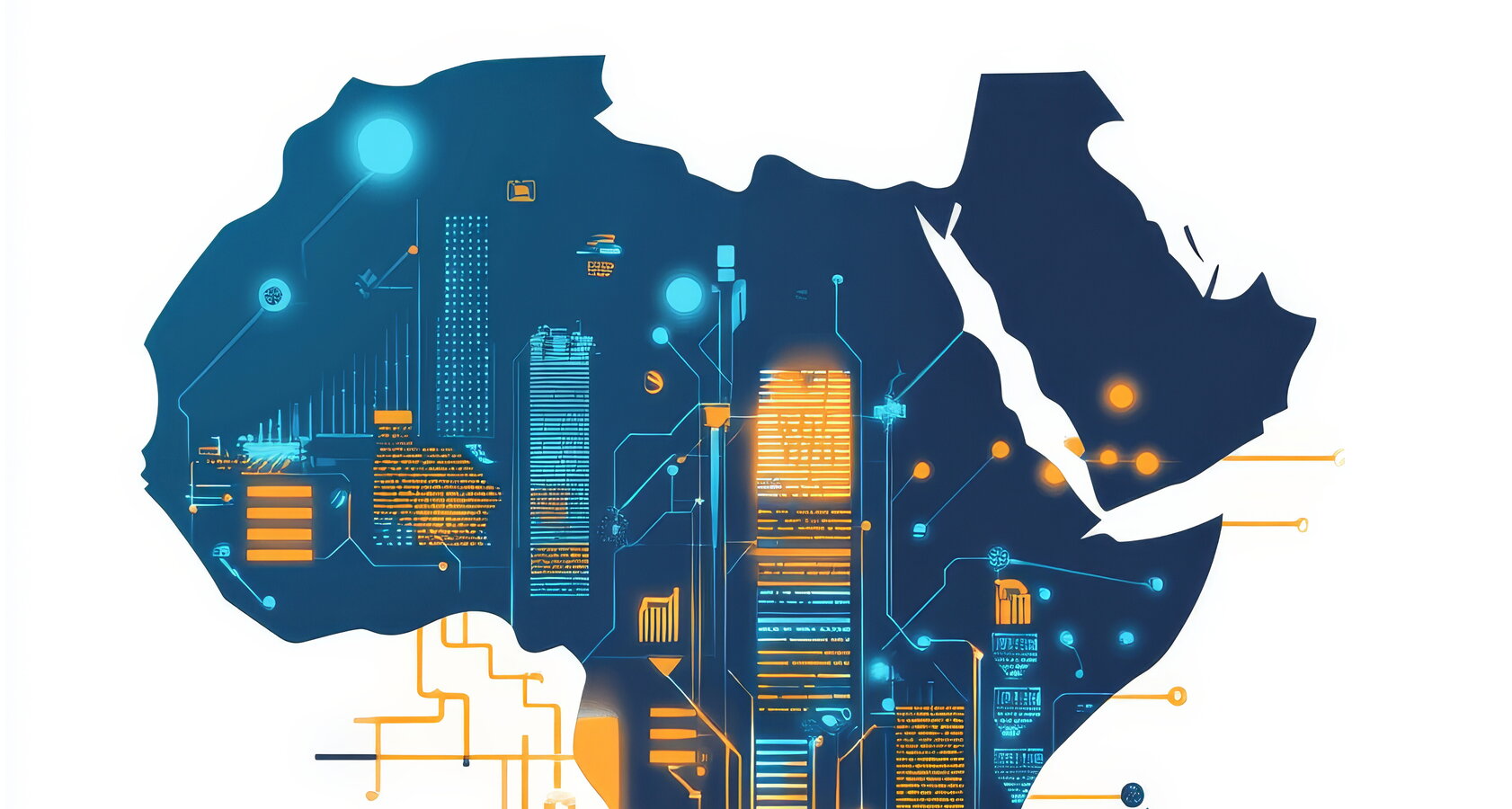
The challenge of sustainability
An environmental ally?
The blessing and curse of an instrument still entirely in the hands of humanity. For now, Isaac Asimov’s three laws are still valid and increasingly our responsibility.
11 min
E
very time we get a new technology or ‘killer app’, gets floated the debate starts all over again: is this pro or anti-humanity? Will we be overwhelmed, or will we put it to good use? With artificial intelligence, the pattern repeats itself, though with very different characteristics and more serious concerns than the home espresso machine, which was its own kind of ‘killer app,’ but in the now obsolete field of home automation, relegated to the cybernostalgia of the retro-futurist imagination of the 1960s and 1970s.
Not that we should trivialize the debate surrounding artificial intelligence. Quite the contrary. And not only because AI is impacting many sectors of our humanity: from the economy—including those who spy a ‘bubble’ in AI-company stocks—to agriculture, the primary basis of human food and, obviously, even our recent spate of wars. With artificial intelligence we are talking about the most intimate aspect of humanity: our thoughts, our logic, our feelings.
Artificial intelligence is approaching the ability to replicate the logical processes of human thought. This raises significant moral and philosophical questions, particularly regarding the future, as the development plans of the major companies in this sector depend not only on the quantity of data but, more importantly, on the quality of that data, which feeds the learning systems. Today, the largest AI systems claim machines and algorithms with learning and processing capabilities that are 4-5 times greater than just a few years ago, at the dawn of tools like ChatGPT. This leap is largely due to the massive increase in data input. However, there is also a physical aspect to this issue, reminiscent of the internet’s dependence on a vast network of undersea cables spanning the globe. In AI, the conversation revolves around chips, the rare earth elements required to produce them, and the geopolitics surrounding those resources, which we explored in the previous issue of this magazine. Beyond the technical aspects, we must also consider the environmental impact—a topic we will now focus on, as it highlights both the potential benefits and drawbacks of this new technology. In doing so, it becomes clear that we must avoid the simplistic division between the “apocalyptic” and the “integrated,” terms made famous by Umberto Eco’s work.
Ouch, how much do you cost? (environmentally speaking)
One of the most contentious issues surrounding artificial intelligence is its environmental impact, especially at a time when the planet is grappling with climate change and many sectors of the global economy are seeking new solutions rooted in clean energy and innovation. The impact of entire industries is often subject to conflicting reports, even when backed by academic studies and scientific research. For example, it’s been revealed that the CO2 emissions from streaming digital music, such as MP3s, exceed those of vinyl records. Similarly, the push for electric mobility has complex implications for energy consumption and the disposal of batteries.

The same concerns apply to artificial intelligence, another technological innovation that may seem futuristic and intangible, but is not without its own environmental footprint.
In the United States, where most of the leading artificial intelligence companies are based, AI’s share of national electricity consumption currently stands at 6 percent, and this figure is expected to rise as more businesses adopt AI technologies. In absolute terms, AI’s energy use is comparable to that of medium-sized countries such as the Netherlands or Switzerland. Furthermore, there is the issue of cooling data and computing centers, chic consume vast amounts of water—raising concerns that some regions could face water shortages or be forced to relocate these facilities within a few years.
A single AI-focused company with a concentrated supply chain can become a significant producer of CO2 and a major consumer of water and energy in the region where it operates. This environmental impact must be weighed against the economic or strategic benefits that AI technology brings, both for the company and for the state.
Not everything is so transparent and clear
Environmental experts, as well as researchers and commentators in the field of new technologies, such as those at the AI Now Institute, have acknowledged the claims made by AI companies that artificial intelligence is helping to develop new computational mechanisms that reduce processing times and, consequently, lower electricity consumption. They also recognize that specific algorithms can optimize procedures to minimize the use of energy and water. However, they agree that there is little independent verification of these claims. Remarkably, given the field, transparency is sorely lacking—not just in how AI models are built but also in demonstrating their environmental benefits.

The AI Now 2023 report, along with a UNESCO document from early 2024, also highlights not only AI’s environmental cost but its uneven geographical and social impact. Not all regions have abundant water resources, nor do all areas enjoy equal access to energy. The danger is that our future could be shaped in regions where the very presence of AI companies exhausts local landscapes and resources. This scenario, while paradoxical, is not beyond the realm of possibility.
But artificial intelligence, like human intelligence, also has another face
Then there’s the other side of the coin—the potential of artificial intelligence to help combat climate change, generate cleaner energy, and reduce excess CO2. There is a growing body of scientific and popular literature on this subject, often presented by the same sources that highlight AI’s negative environmental impacts. For instance, the Harvard Business Review, which critiques the unequal environmental costs of AI, also points out that intelligent algorithms could help distribute AI traffic—i.e., the combination of data centers, workloads, and skills—across different locations, regardless of where a company’s central computing headquarters are based. This could lead to a “federalization” of environmental costs, spreading the burden more evenly across regions and reducing the strain on local communities.
Geographical redistribution isn’t the only positive outcome AI could offer. The European Space Agency (ESA), for example, is testing AI to create highly accurate and fast maps of the Arctic and Antarctic. This data collection, processed by AI, provides precise and rapid mapping, invaluable not only for researchers and travelers to these remote regions but also for studying and preserving the ice that helps regulate the planet’s temperature. AI’s ability to rapidly analyze and store vast amounts of data opens up further possibilities for mapping in areas such as deforestation control, monitoring forest boundaries, identifying waste dumping sites (which often pose significant health risks), and tracking animal populations in Africa.
These maps aren’t just snapshots of the present—they offer predictive insights into the future under specific conditions. The value of this data, particularly for those with access to it, is immeasurable and extends into the geopolitics of AI.
AI isn’t only being used in extreme environments to benefit the planet. In London, for example, companies like Grey Parrot—one of the most prominent—are using artificial intelligence to analyze waste, optimize the waste cycle, and shorten processing times for recyclable materials, all of which helps improve recycling efficiency in the post-pandemic world.
The pattern is always the same: introducing context and data, analyzing an ever-growing volume of information with increasing speed, and proposing solutions that can continually be refined. Philosophically, this approach works both for logic and the environment. For instance, if instead of focusing on a city’s waste cycle, we ask AI to address ocean waste recovery, we could develop a global cleanup model. Starting with mapping the “floating garbage patches”—those vast islands of plastic debris we’ve seen in dramatic footage from even the most pristine waters—we could tackle this growing environmental crisis. These patches pose a grave threat to ocean health and the animals living there, such as whales and seals. Over time, microplastics from these islands enter the food chain, from fish and mollusks to humans.

By using AI to analyze climate data, ocean currents, and tidal movements, we could devise a precise and phased plan for cleaning the oceans. Similarly, AI could be used in agriculture to map and create reseeding and reforestation plans. By analyzing data on light, soil, and climate, AI can help identify ideal locations for tree cultivation, ensuring their successful growth in the years ahead. These examples show both the risks and benefits of AI’s environmental impact.
Despite these possibilities, the future remains far from deterministic. We are still in a phase where Asimov’s famous Three Laws of Robotics remain theoretical, and much—if not all—of the responsibility lies in human hands. While AI may have significant environmental costs, these can be mitigated if we invest not only in commercial applications but in environmental solutions as well.
Perhaps most promisingly, AI can also be a powerful ally in reversing the course of climate change and mitigating the harmful effects of human activity through projects aimed at cleaning up cities, oceans, and forests. But, of course, it is up to us to provide the right data for AI to process, intelligently.

